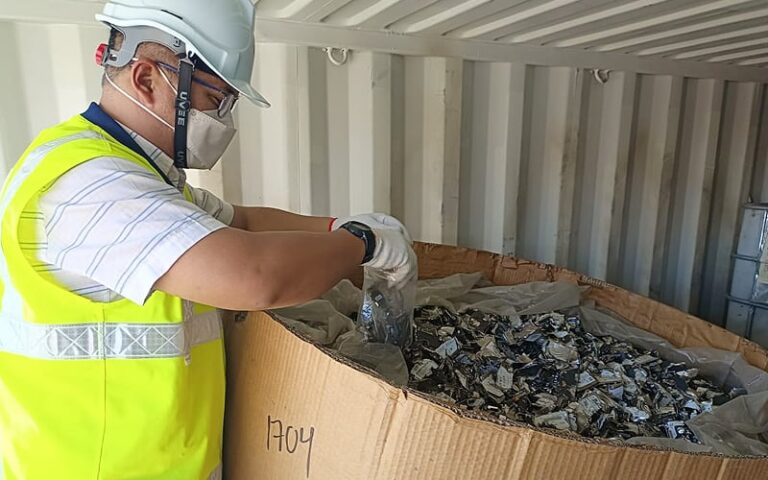Would You Ever Want to Live on the Moon or Mars?
By Jeremy Engle – Oct 5, 2023
A version of this article was first published on The New York Times
Can you envision yourself living on the moon or somewhere else beyond Earth? If so, why? What is compelling about traveling to other worlds in space?
In “Maybe in Your Lifetime, People Will Live on the Moon and Then Mars,” Debra Kamin writes about NASA’s plans to build houses on the moon by 2040:
The moon is a magnet, and it is pulling us back.
Half a century ago, the astronauts of Apollo 17 spent three days on that pockmarked orb, whose gravitational pull tugs not just on our oceans but our imaginations. For 75 hours, the astronauts moonwalked in their spacesuits and rode in a lunar rover, with humanity watching on television sets 240,000 miles away. The Apollo program was shuttered after they splashed back down to the Pacific Ocean in December 1972, and since then, the moon has hung, uncharted and empty, a siren in the sky.
NASA is now plotting a return. This time around, the stay will be long-term. To make it happen, NASA is going to build houses on the moon — ones that can be used not just by astronauts but ordinary civilians as well. It believes that by 2040, Americans will have their first subdivision in space. Living on Mars isn’t far behind. Some in the scientific community say NASA’s timeline is overly ambitious, particularly before a proven success with a new lunar landing. But seven NASA scientists interviewed for this article all said that a 2040 goal for lunar structures is attainable if the agency can continue to hit its benchmarks.
The U.S. space agency will blast a 3-D printer up to the moon and then build structures, layer by additive layer, out of a specialized lunar concrete created from the rock chips, mineral fragments and dust that sits on the top layer of the moon’s cratered surface and billows in poisonous clouds whenever disturbed — a moonshot of a plan made possible through new technology and partnerships with universities and private companies.
“We’re at a pivotal moment, and in some ways it feels like a dream sequence,” said Niki Werkheiser, NASA’s director of technology maturation. “In other ways, it feels like it was inevitable that we would get here.”
The article continues:
Among the many obstacles of taking up residence on the moon is the dust — fine powder so abrasive it can cut like glass. It swirls in noxious plumes and is toxic when inhaled.
But four years ago, Raymond Clinton Jr., senior technical adviser of the science and technology office at NASA’s Marshall Space Flight Center in Huntsville, Ala., pulled out a whiteboard to sketch the idea of houses, roads and landing pads. The dust is a problem, yes. But it could also be the solution.
If homes on Earth could be successfully 3-D printed from soil made from the minerals found here, he thought, homes on the moon could be printed from the soil up there, where temperatures can swing up to 600 degrees and a vicious combination of radiation and micrometeorites pose a risk to both buildings and bodies.
NASA is calling its return to the moon Artemis, named after the twin sister of Apollo. Last November, Artemis I, the first of five planned moon missions, blasted off from Kennedy Space Center with only robots on board, circled the moon and returned safely to Earth. Artemis II, which will carry four human crew members on a 10-day flight around the same path — including the first woman and the first Black person in history to make this trip — is scheduled for November 2024. That mission will be followed up one year later by Artemis III, when humans will land on the lunar surface. Two more crewed missions are planned before the end of the decade.
Dr. Clinton, 71, says he knows that average Americans may not be living on the moon during his lifetime, but for those just a few decades younger than him, it’s a real possibility.
Students, read the entire article and then tell us:
Have you ever dreamed of living on the moon, Mars or somewhere else beyond Earth? If so, why? What is so fascinating and enchanting about this possibility? If not, why not?
The article notes that there are many practical and technical challenges in taking up residence on the moon, such as the presence of abrasive moon dust or the temperatures of up to 600 degrees. Which obstacle to creating habitable settlements on the moon do you think is most formidable? How confident are you that NASA and others will find solutions to these challenges in your lifetime?
If you had an opportunity to live anywhere in space, where would you visit or want to permanently stay? The moon? Mars? Another planet in the Milky Way? Or even somewhere beyond our solar system? Why?
Dr. Clinton, 71, says that average Americans may not be living on the moon during his lifetime, but for those just a few decades younger than him, it’s a real possibility. What do you think? Make some predictions: Will humans ever live on the moon or any other location in space (besides a space station in low-Earth orbit)? If so, by what year? Do you think that you ever will?




![[Press Release] Ground-breaking Ceremony for DHL New HUB, Bayan Lepas, Pulau Pinang](https://www.penangstem.com/wp-content/uploads/2022/07/DHL-21072022-980x735.jpg-768x576.webp)

